Using Left Pointer Finger To Bend Low E String
One of the fundamental characteristics of the guitar is how the sound of a note is modulated, or changed.
And one of the fundamental ways the sound of a note is modulated, is by bending a string.
Bending a string is not easy, and requires dedicated practice of the technique.
First of all, if you are a beginner, you won’t have callouses on your fingertips. Therefore, your fingertip will be soft and squishy and instead of your finger bending the string, the string will want to cut into the flesh of your fingertip.
Therefore, its very important to wash and completely DRY your hands like 30 minutes before practice.
NEVER practice guitar right after you get out shower, while your fingers are moist. The strings will cut your fingers like warm butter, and you won’t even feel it until your fingers are bleeding.
ALWAYS visually inspect your fingertips every few minutes, to make sure your skin is not broken.
If your skin shows any sign of damage, STOP immediately, and do not use that finger the rest of the day.
Use broken skin on a finger as an opportunity to learn how to play without that finger, and to learn how to shift fretting responsibilities to other fingers.
As you develop callouses, your fingertips will become more impervious to damage. Your fingertips will become like shoe leather. The strings won’t sink into your flesh, so you’ll have more control of the string, and more control of your tone.
“Tone comes from your fingers” ~ Joe Satriani
In addition to soft, squishy skin, you will also have soft, squishy muscles in your fingers and hands.
So what you need to do is treat these muscles like you are at the gym. Think in terms of increasing resistance, sets and reps.
Its hard work, so just get it in your mind that you are going to have to bust your ass if you want progress and results.
Doing these bending exercises should start out as a hand-eye exercise, and then shift to a hand-ear exercise as soon as possible.
So start out by WATCHING how far you want to bend the note, and then shift to LISTENING to how far you want to bend the note.
At first, try to bend the string up a 1/4 tone/step, then bend up 1/2 tone/step, then a full tone/step.
Developing your fingertip callouses, and hand/finger muscles is the first step in developing vibrato.
Start on the low E string, and bend the string down, away from you, toward the A string.
If you bend the E string up, the string will fall off the edge of the frets. Give it a try just to see why you don’t want to bend the E string up.
Move your bending exercises thru ADGB strings.
When you get to the high E string, you’ll have to focus on bending the string up, toward you, toward the B string.
Again, if you bend the high E string down, it will fall off the edge of the frets. Go ahead and bend the high E string down until it falls off the frets, so you know why you don’t want to do that.
So, for the Low E and high E, you can only really bend them one way, toward the middle of the fretboard.
But for the ADGB strings, you can bend them either way, up or down.
Practice bending the ADGB strings both up and down.
Once you have mastered these bend exercises on your pointer finger, master them on all the other fingers.
Again, be very careful with moist fingers, and stop immediately at any sign of skin damage. Its far better to cut your practice short today, than to have to miss practice tomorrow.
If all 4 of your finger tips are showing skin damage, use it as an opportunity to either practice using the finger pads, or just stop using the left hand altogether and focus your practice time on right-hand technique, or other music skills like singing, drums etc
Learn the mental habit of using your temporary set-backs as opportunities to practice something different
next video:
Using The Left Pointer Finger To Bend A Note Up A Half-Step By Ear
https://rumble.com/vd2iw3-using-the-left-pointer-finger-to-bend-a-note-up-a-half-step-by-ear.html
-
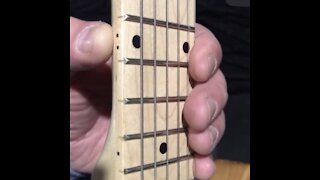 0:53
0:53
Guitar Left Hand Technique
3 years agoUsing Your Thumb As Anchor Point, And Your Pointer Finger To Fret Many Notes
28 -
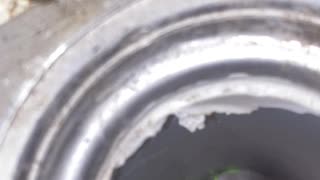 1:24
1:24
ViralHog
3 years agoUsing Sticks and String to Rescue Trapped Kitten
104 -
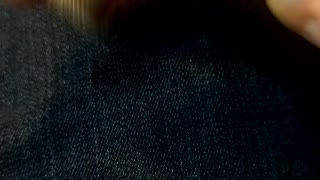 0:04
0:04
palmsandstuff
3 years agoFinger dancing
53 -
 18:13
18:13
Tony Katz
3 years agoHeadliner: The Political Left Using COVID As An Opportunity
4203 -
 0:04
0:04
palmsandstuff
3 years agoFinger dancing part 2
28 -
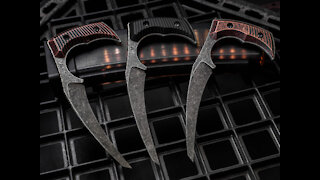 0:44
0:44
HavocWorks Custom Knives
3 years ago $0.01 earnedHavocWorks Witch Finger
131 -
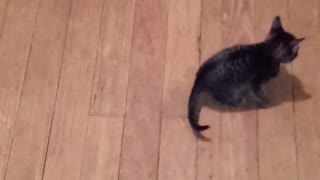 5:07
5:07
Terry911
3 years agoKittens chasing a string
69 -
 0:18
0:18
N2Boost
3 years agoThunderbirds Finger 4 Split
968 -
 7:00
7:00
Sean Hannity
3 years agoGaetz: Left using 'national security authorities' to target Trump backers
42.5K129 -
 30:44
30:44
TudorDixon
22 hours ago $0.18 earnedBlack Victim to Black Victor with Adam Coleman | The Tudor Dixon Podcast
38.8K22